Abstract
In the northeastern Pacific, intertidal zones of the most wave-beaten shores receive more energy from breaking waves than from the sun. Despite severe mortality from winter storms, communities at some wave-beaten sites produce an extraordinary quantity of dry matter per unit area of shore per year. At wave-beaten sites of Tatoosh Island, WA, sea palms, Postelsia palmaeformis, can produce > 10 kg of dry matter, or 1.5 × 108 J, per m2 in a good year. Extraordinarily productive organisms such as Postelsia are restricted to wave-beaten sites. Intertidal organisms cannot transform wave energy into chemical energy, as photosynthetic plants transform solar energy, nor can intertidal organisms “harness” wave energy. Nonetheless, wave energy enhances the productivity of intertidal organisms. On exposed shores, waves increase the capacity of resident algae to acquire nutrients and use sunlight, augment the competitive ability of productive organisms, and protect intertidal residents by knocking away their enemies or preventing them from feeding.
Keywords: leaf area index, Mytilus californianus, Postelsia, rocky shore, zonation
Full text
PDF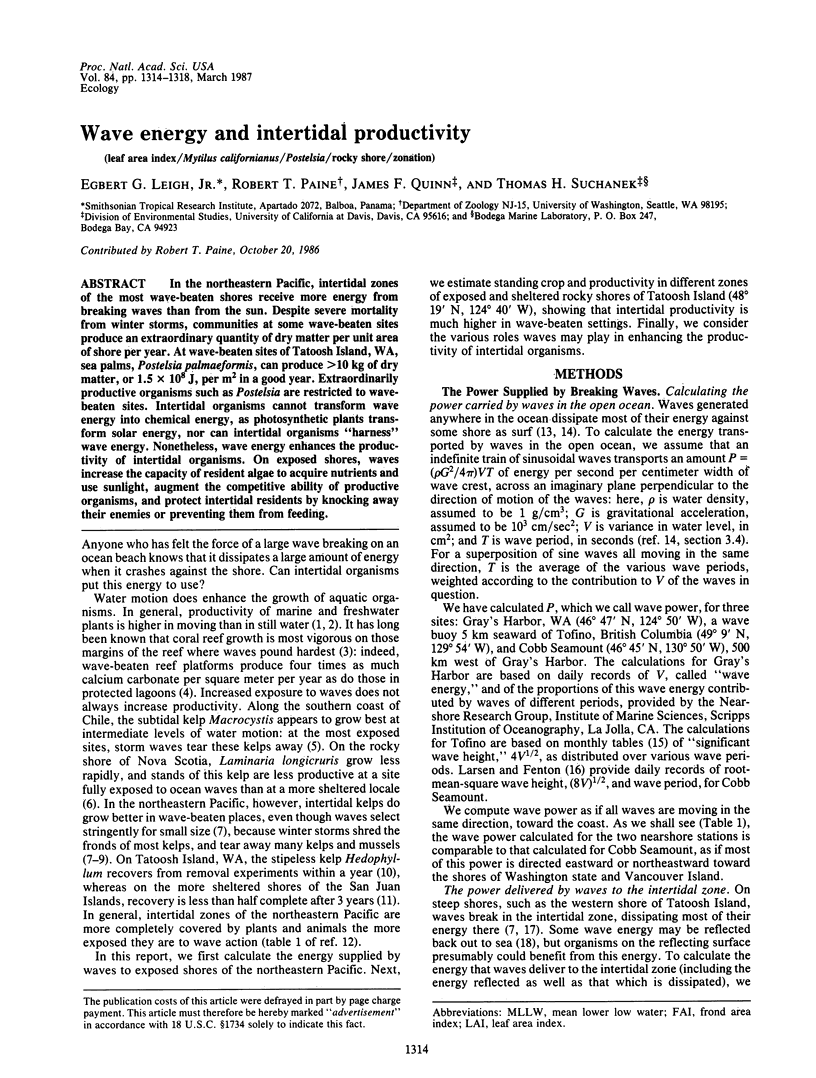
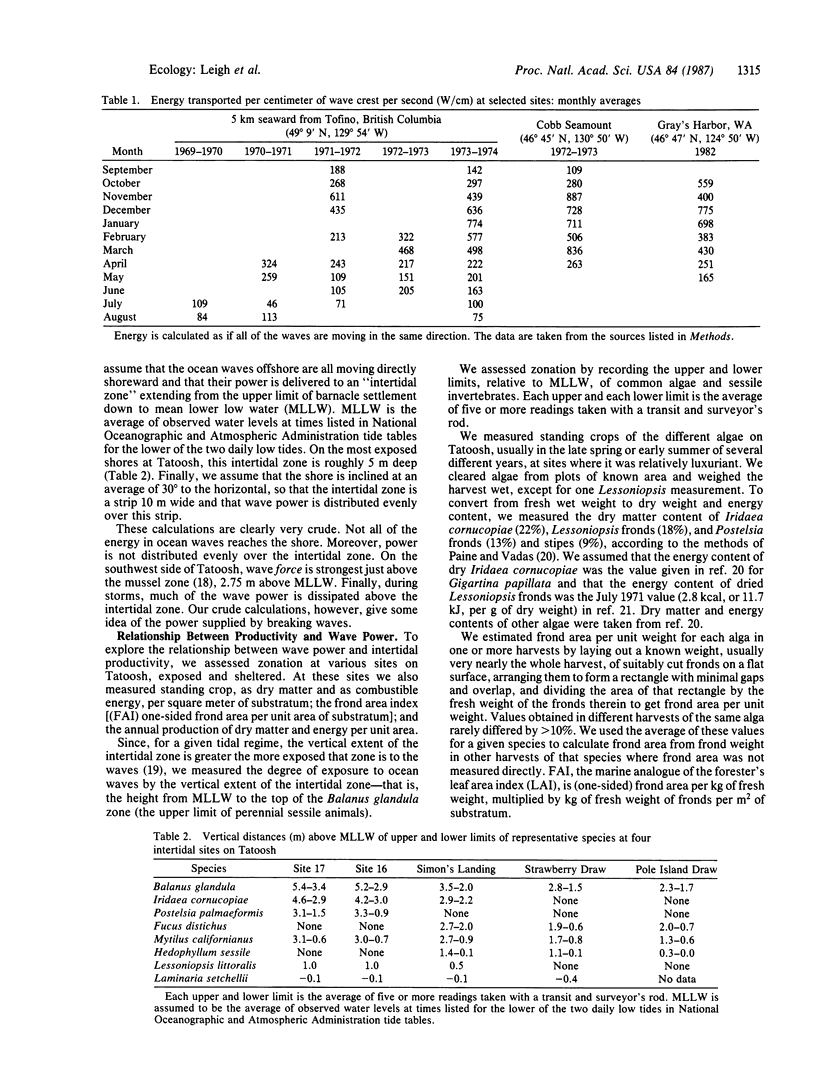
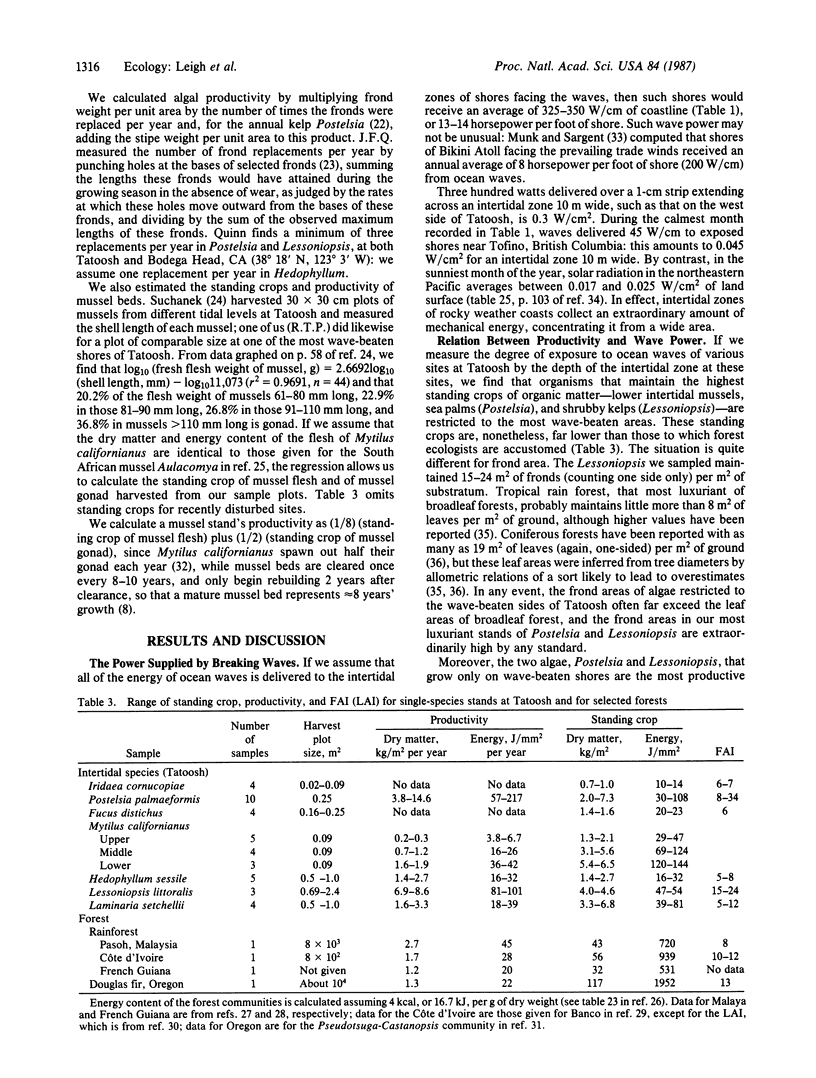
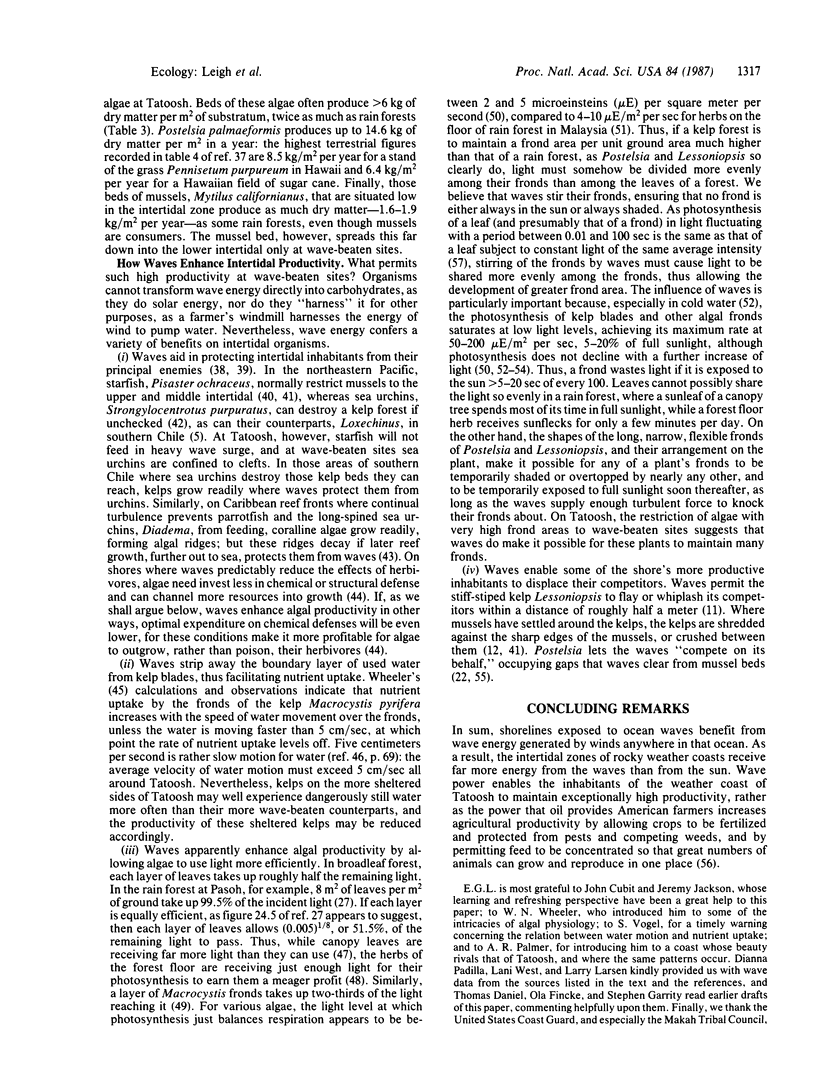
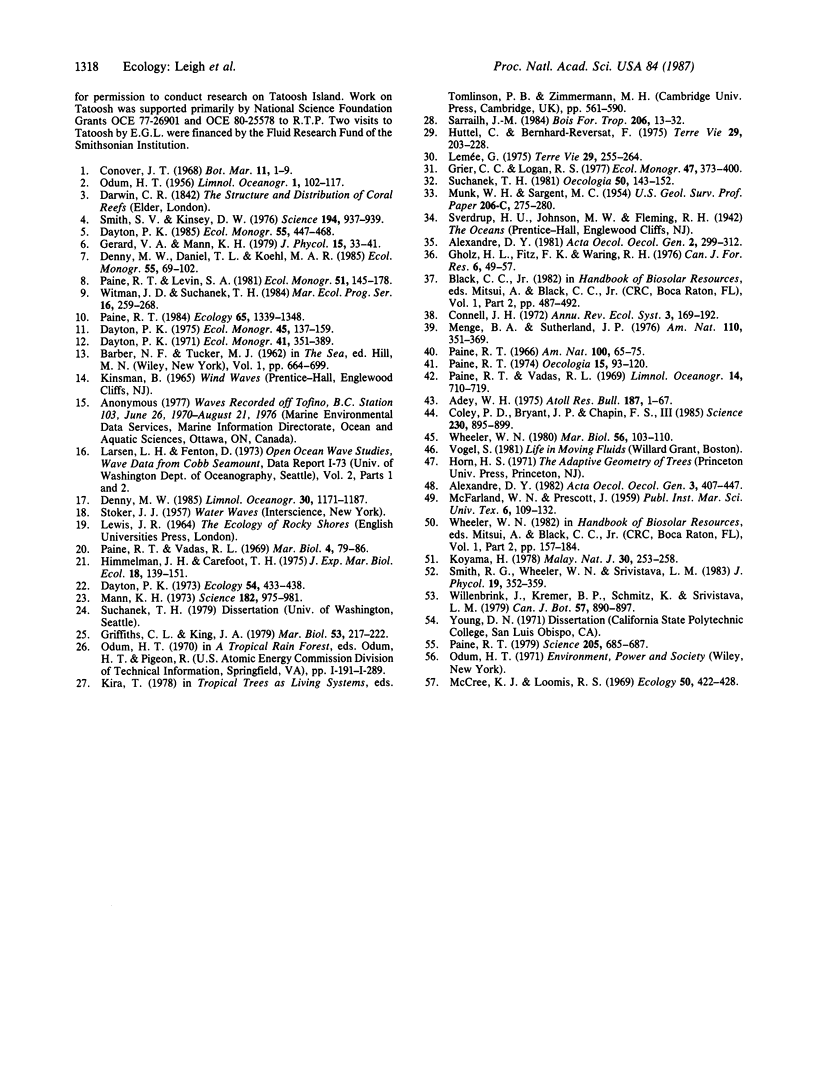
Selected References
These references are in PubMed. This may not be the complete list of references from this article.
- Coley P. D., Bryant J. P., Chapin F. S., 3rd Resource availability and plant antiherbivore defense. Science. 1985 Nov 22;230(4728):895–899. doi: 10.1126/science.230.4728.895. [DOI] [PubMed] [Google Scholar]
- Mann K. H. Seaweeds: Their Productivity and Strategy for Growth: The role of large marine algae in coastal productivity is far more important than has been suspected. Science. 1973 Dec 7;182(4116):975–981. doi: 10.1126/science.182.4116.975. [DOI] [PubMed] [Google Scholar]
- Paine R. T. Disaster, Catastrophe, and Local Persistence of the Sea Palm Postelsia palmaeformis. Science. 1979 Aug 17;205(4407):685–687. doi: 10.1126/science.205.4407.685. [DOI] [PubMed] [Google Scholar]
- Smith S. V., Kinsey D. W. Calcium carbonate production, coral reef growth, and sea level change. Science. 1976 Nov 26;194(4268):937–939. doi: 10.1126/science.194.4268.937. [DOI] [PubMed] [Google Scholar]


